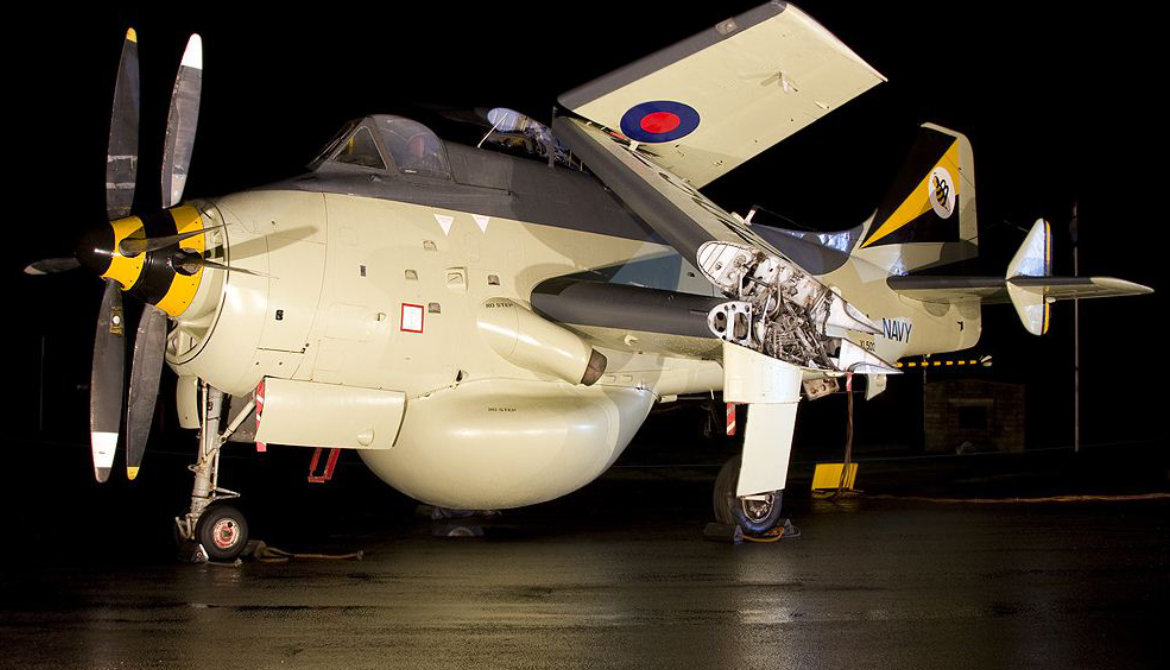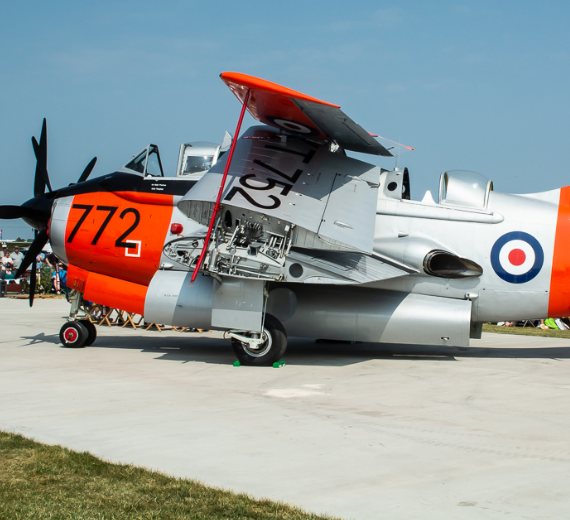Fairey Aviation
Fairey Gannet AEW3
|
|||||||||||||||||||||||||
|---|---|---|---|---|---|---|---|---|---|---|---|---|---|---|---|---|---|---|---|---|---|---|---|---|---|
.
History Fairey Aviation Company Limited
Fairey Gannet AEW&C AS.1

The Gannet was originally developed to meet a Second World War era requirement for a dual-role ASW and strike to equip the FAA. It was a mid-wing monoplane with a tricycle undercarriage and a crew of three, with a double turboprop engine driving two contra-rotating propellers. On 19 September 1949, the prototype Gannet performed its maiden flight. Four years later, it was brought into regular service with the FAA. The service would use the type from the majority of its aircraft carriers throughout the Cold War. Various export customers were also secured for the Gannet, including the Royal Australian Navy, the German Navy, and the Indonesian Navy, most of these operating the aircraft exclusively from land bases.
The Fairey Gannet is a carrier-borne aircraft that was designed and produced by the British aircraft manufacturer the Fairey Aviation Company. It was developed for the Royal Navy, being the first fixed-wing aircraft to combine both the search and strike portions of anti-submarine warfare (ASW) operations to be operated by the Fleet Air Arm (FAA).

-
Design

Fairey Gannet XT752/772-LM has been restored to flying condition The Fairey Gannet is a carrier-borne turboprop-powered aircraft. It was typically operated by a crew of three, a pilot and two aerial observers. The pilot was seated directly above the aircraft's Double Mamba engine and behind the gearbox and contrarotating propellers in a position that conferred a favourable view over the nose for carrier operations. The first observer was seated underneath a separate canopy that was directly aft of the pilot's position. On the production aircraft, a second observer was also present in their own cockpit that was located over the wing trailing edge. This addition disturbed the airflow over the horizontal stabiliser, necessitating the addition of small finlets on either side
Photo Gallery
Fairey Aviation Company Limited
Fairey Gannet AEW&C AS.1


Fairey Aviation Company Limited
Fairey Gannet AEW&C AS.1
General Info 1
-
-
- Crew: 3
- Length: 43 ft 0 in (13.11 m)
- Wingspan: 54 ft 4 in (16.56 m)
- Height: 13 ft 9 in (4.19 m)
- Wing area: 483 sq ft (44.9 m2
-
General Info 2
-
-
- Empty weight: (6,835 kg)
- Max takeoff weight: (8,890 kg)
- Powerplant: 1 × Armstrong Siddeley ASMD.1 Double Mamba coupled turboprop engine, 2,950 shp (2,200 kW) equivalent
- Propellers: 8-bladed Rotol contra-rotating propeller
-
.
Links to Youtube & Others
Designed in response to a 1945 Royal Navy request for a dedicated anti-submarine aircraft the first Gannet flew in 1949, but did not enter service until 1955.
Fairey Aviation
Fairey Gannet AEW AS.1
The Fairey Gannet was developed for the British Fleet Air Arm for anti-submarine warfare from carriers. First flight was September 1949.
Youtube Link
The Fairey Gannet was developed for the British Fleet Air Arm for anti-submarine warfare from carriers. First flight was September 1949.














